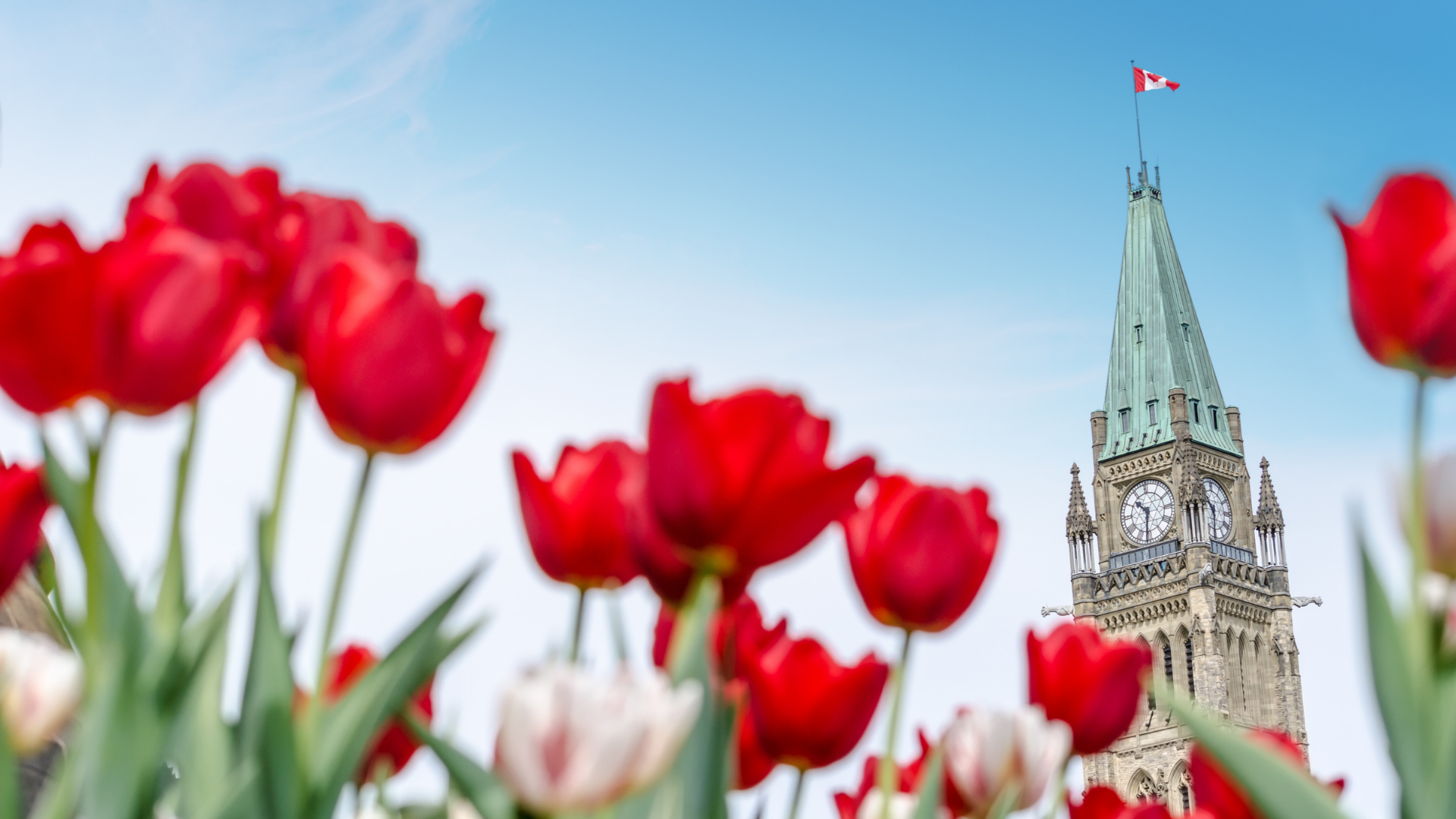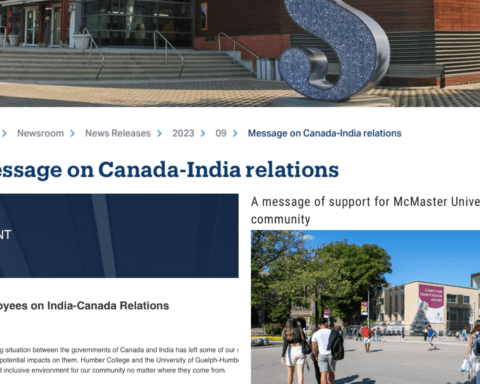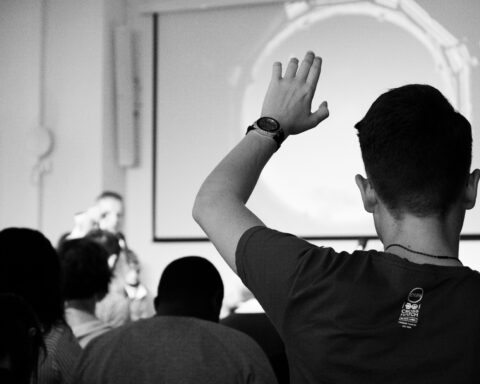Every spring, Ottawa residents awaken to an explosion of colour across their beautiful city. Tens of thousands of tulips attract, amaze and delight Ottawans and visitors to the city in the Canadian Tulip Festival. “These tulips are a token of our gratitude to Canada,” Princess Margriet of the Netherlands told New Canadian Media in an emailed statement.
“As I was born in Ottawa, I particularly feel strongly attached to Canada. I think of Canada as my second homeland. Whenever I visit, the warm welcome of the Canadian gives me a sense of coming home. The country and its citizens have a special place in my heart.”
Most people who attend know the flowers were a gift from the royal family of the Netherlands. Fewer people know the story behind why Canada received such a gift. Even fewer know about the immigration law that created a succession crisis in the House of Orange-Nassau, the family that currently rules the Dutch.
The reason why Princess Margiet was born in Ottawa and not in her homeland is a tragic one. Her country was invaded and occupied by the Nazis beginning in May of 1940. Fearing for their safety, Queen Wilhemina, Margriet’s grandmother, fled to Britain along with the rest of the family. But not long after that, the Battle of Britain began. Fire and steel were raining down from the sky and the ever-present threat of invasion meant that their new home was not safe either. Queen Wilhemina remained in Britain as the head of the Dutch government-in-exile. Her daughter, Princess Juliana fled to Canada with her family. They eventually found a quiet home in a house some Ottawans might recognize. Today, Stornoway is the official residence of the leader of the official opposition. But back during World War 2, it was here that Juliana lived with her family. The awkwardness began when it was discovered she was pregnant with Margriet.
Right of the soil
Canada has traditionally used a naturalization concept called Jus Soli, which means ‘right of the soil’ in Latin. It is more commonly known as birthright citizenship. If you are born in Canada, you are Canadian. With the way this country’s laws were set up at the time, Margriet would have become a British subject. The Naturalization Act of 1914 would have been at play here. It clearly stated that “persons deemed to be natural-born British subjects” included “any person born in His Majesty’s dominions and allegiance.”
Jus Soli is the law in almost all the countries in the Americas. The only old-world exceptions appear to be Pakistan, Tanzania and Lesotho. Canada appears to have borrowed its Jus Soli policy from the British. It has its origins in English common law. It’s hard to ascertain the exact story of how Canada came to adopt birthright citizenship from the English, but one of their laws offers a clue. The British Nationality and Status of Aliens Act of 1914 is worded identically to the Naturalization Act of 1914. Britain’s laws were Canada’s laws and they would therefore apply to the Dutch royals.
A potential heir to the throne being under the thumb of the British government was a problem. “Since it was 1943 and they didn’t have the technology yet to tell you whether the baby was going to be a boy or a girl, it would have been a problem if the baby turned out to be a boy,” said historian Adam Bunch. He is the author of The Toronto Book of the Dead where he recounts some of the more macabre stories of Toronto’s history. Bunch also hosts Canadiana his YouTube channel where he takes deep dives into various episodes of Canadian history. The birth of Princess Margriet is one of his videos.
Any future king of the Dutch would have to be, Bunch said, “solely Dutch and not have dual citizenship with another country. So being Canadian would have been a problem if they had given birth to a little prince.” The then-Government of Canada declared Juliana’s maternity ward denationalized, which Bunch describes as “a little puddle of international waters.” The Netherlands practices Jus Sanguinis, Latin for the ‘right of blood’. If a baby’s parents are Dutch citizens, they have a right to claim citizenship with the Netherlands regardless of where they were born. Canada also practices Jus Sanguinis alongside Jus Soli. So Canadians can be born abroad and have a right to claim Canadian citizenship.
Canada’s new national identity
The birth was a huge morale boost for Margriet’s people.
The Dutch resistance against the Nazis wrote in their newspaper, De Oranjerkrant, “Little Margriet, you will be our princess of peace. We long to have you in our midst — Come soon Margriet. We are awaiting you with open arms.”
Canada welcomed the young princess by flying the Dutch flag over the Peace Tower at Parliament Hill, the only time a foreign flag has flown there. Canada would go on to help liberate the Netherlands from the Nazis. They would also launch Operations Manna and Chowhound, the hulking task of airlifting food to the starving Dutch people during the war. For these reasons, and sheltering the Dutch royals, Ottawa received thousands of tulips as a gift after the war. Each year, residents are reminded of the special friendship between the two nations when they bloom.
Canada would update it’s immigration laws in 1947. The Canadian Citizenship Act was, in part, a tool for helping Canada to establish a national identity. Service in two world wars helped give Canada a look in the mirror and Canadians liked what they saw. They growingly saw themselves as distinct from Britain and wanted an identity of their own. Henceforth with the new law, children born in Canada were no longer British subjects, but Canadian citizens with a birthright to Canadian soil.
Mansoor Tanweer is New Canadian Media’s Local Journalism Initiative reporter on immigration policy. An immigrant himself, he has covered municipal affairs and the Brampton City Council in addition to issues relating to newcomers over several years.





